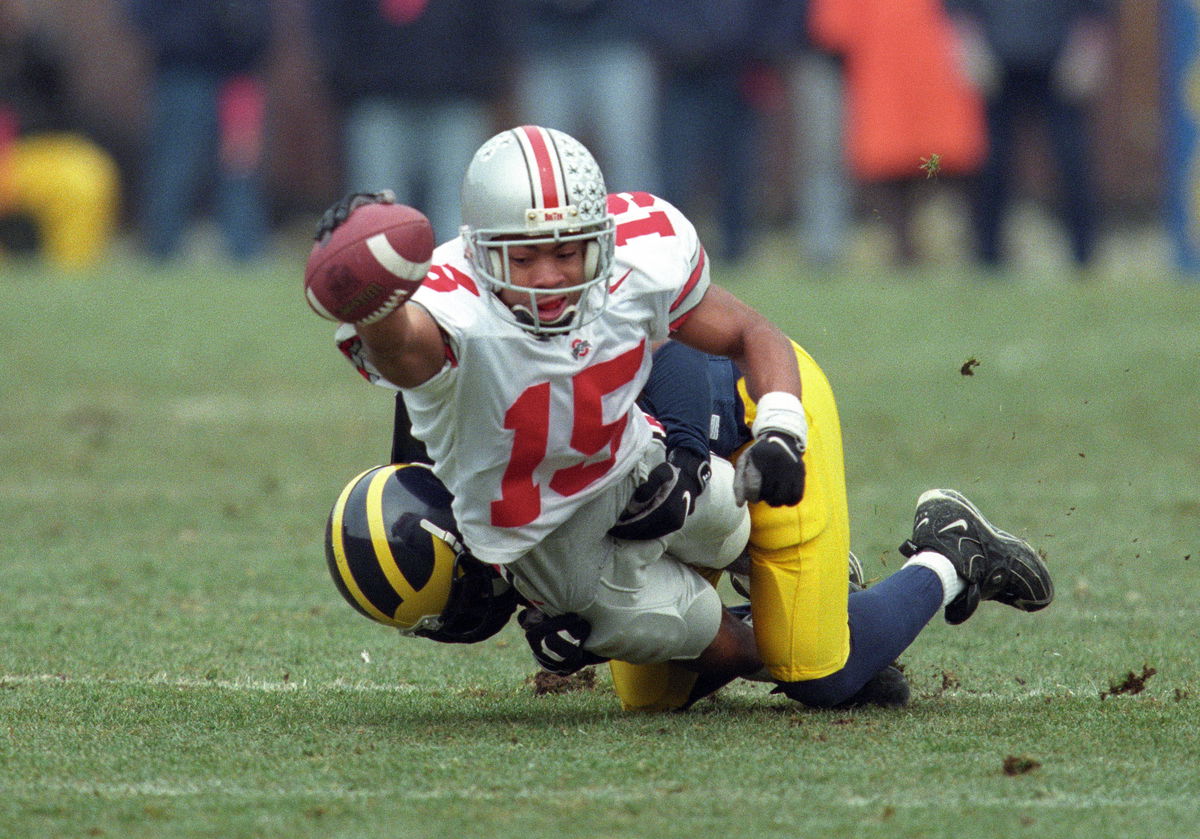
Imago
US PRESSWIRE Sports Archive Nov 22, 1997 Ann Arbor, MI, USA Ohio State Buckeyes receiver Dee Miller 15 fights for more yardage against Michigan Wolverines at Michigan Stadium. The Wolverines beat the Buckeyes 20-14. Ann Arbor Michigan UNITED STATES, EDITORIAL USE ONLY PUBLICATIONxINxGERxSUIxAUTxONLY Copyright: xMatthewxEmmons-USAxTODAYxSportsx 4724700

Imago
US PRESSWIRE Sports Archive Nov 22, 1997 Ann Arbor, MI, USA Ohio State Buckeyes receiver Dee Miller 15 fights for more yardage against Michigan Wolverines at Michigan Stadium. The Wolverines beat the Buckeyes 20-14. Ann Arbor Michigan UNITED STATES, EDITORIAL USE ONLY PUBLICATIONxINxGERxSUIxAUTxONLY Copyright: xMatthewxEmmons-USAxTODAYxSportsx 4724700
The College Football landscape is constantly evolving, with the NIL and the transfer portal. Quite recently, the shakeups initiated by the House vs. NCAA settlement are in course, and while that happens, the teams are looking for more ways to generate revenue. One such idea was to explore private equity investment in different conferences, something Big 12 commissioner Brett Yormark emphasized months ago. But now, the Big 10 has followed suit with Brett Yormark and is currently on course to chart a $2 billion deal through private capital investments. However, the Big 10’s two blueblood rivals, Ohio State and Michigan, are becoming a roadblock.
Watch What’s Trending Now!
“The Big Ten has been in discussion for months with several private capital firms to infuse upwards of $2 billion into its schools… This is far from finalized and might not reach the finish line. At least two schools – Ohio State and Michigan – are, for a variety of reasons, pushing back against the proposal that Big Ten commissioner Tony Petitti has been socializing since the spring,” reported Ross Dellenger of Yahoo Sports on X. Apart from the $2 billion investment, the move will come with a significant contract extension of the conference’s media rights.
As reported by ESPN, the current deal would only be approved if the conference agrees to a 10-year extension for the media rights deal with CBS, FOX, and NBC. Currently, the Big 10’s media rights deal, signed in 2022, runs till the 2029-2030 athletic year and is valued at $8 billion, as per many sources. FOX is currently hosting the majority of the games, followed by CBS and NBC/Peacock for basketball games. The extra 2 billion dollars are expected to make a significant difference for the current 18 teams.
ADVERTISEMENT
“Over a year ago, we initiated a comprehensive evaluation of our practices to identify partnerships that could secure the financial stability of our member institutions and allow us to not only protect, but expand, opportunities for our student-athletes. This is an ongoing process, and we remain committed to finding a path that strengthens the conference for the future,” said the Big Ten’s Statement as news about the private equity deal became public. As for the benefits, they are manifold for the teams.
The Big Ten has been in discussion for months with several private capital firms to infuse upwards of $2 billion into its schools that would require a 10-year extension of the grant of rights (2046) in a tiered distribution structure, sources tell @YahooSports, as ESPN reported.
— Ross Dellenger (@RossDellenger) October 1, 2025
First and foremost, the $2 billion equity investment is expected to bind the 18 current teams into the conference structure for a long time, making jumping ship a non-option. That ensures stability and a significantly better product without disruptions in the future. More than that, the investment is slated to divide the conference’s revenue in 20 equal parts, with each of the 18 teams getting one share each. While the two remaining parts will remain for the conferences and the investor. This is, however, not the first time something like this has happened in the sport.
ADVERTISEMENT
Why are Michigan and Ohio State opposing the $2 billion move?
Big 12 commissioner Brett Yormark echoed sentiments about selling some stake to private equity firms to inject capital into the conference and faced backlash within the conference. However, in the NFL, the New England Patriots had recently sold their 3% stake in the franchise, with a total $9 billion valuation for the team. The NFL’s owners also voted to allow the move, and many more could follow in the future. As for the Big 10, Ohio State and Michigan’s concerns aren’t unfounded.
ADVERTISEMENT
The major skepticism stems from selling the stake, however small, to a private entity. That would mean the commercialization of public university assets privately, something that would face major backlash in the state. Both OSU and Michigan are financially strong and don’t have that much need for the extra money besides the $63 million they are getting annually from the conference. The sentiment in the programs is on the same line.
“As a Regent, I believe selling off Michigan’s precious public university assets would betray our responsibility to students and taxpayers. I will firmly oppose any such effort—and I hope colleagues at @MSU and @OhioState will stand with me as well,” wrote Michigan Regent Jordan Acker on X. The Big 10’s commission on the other hand has tried to diffuse the fire by terming the sharing to be “a small percentage” for “greater profits” and is trying to take the two blueblood rivals on board. However, without the support of the Big 10 and Ohio State, the proposal will most likely remain on the back burner for the foreseeable future.
ADVERTISEMENT
ADVERTISEMENT
ADVERTISEMENT

